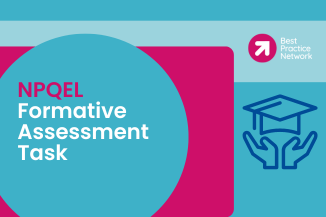
Effective Risk Management in a Trust
NPQEL Participant, Autumn 2021 Intake
Identifying and assessing risks
It is a requirement of the Academies Financial Handbook (AFH) that as a Trust we must manage risks to ensure the effective operation of the Trust. Risks must be identified in a risk register, which must include contingency and business continuity planning.
Two further key documents that we must consider as a Trust are;
- The ESFA good practice guide on internal scrutiny
- The Orange Book - Management of Risk - Principles and Concepts
Risk management involves the identification, measurement, management, monitoring and reporting of threats to an academy trust’s business objectives. Such threats can arise from a wide variety of sources such as; litigation relating to safeguarding failures, financial uncertainty from a falling roll, security risk from inappropriate access to data, property risk from fire or flood, accidents resulting in injury, natural disasters such as a global pandemic.
As Trust leaders we must identify risks and implement appropriate mitigating control measures as part of our normal business, for example managing the risks associated with Health and Safety.
Example of The Risk Register
| Risk categories | Possible events |
| Strategy risks – Risks arising from identifying and pursuing a strategy, which is poorly defined, is based on flawed or inaccurate data or fails to support the delivery of commitments, plans or objectives due to a changing macro-environment (e.g., political, economic, social, technological, environment and legislative change) |
Failure to appropriately plan for forecasted future pupil numbers, including continued growth of SEND schools within Trust, which exceeds building’s capacity. |
Once risks are identified and recorded on the Risk Register it is good practice to focus on the detail of a perceived risk, the model currently used at Aspire is the following ‘Stating Risks – cause, event, consequence’ document. Using a model such as this allows senior leads and the Trust Board to gain a greater understanding of the possible cause and consequences associated with each and the possible mitigation or reduction of identified risk.
Stating Risks – cause, event, consequence – Strategy Risks
.png)
Risk treatment/mitigation One of the greatest identified challenges for us as a newly formed Trust is our Trust Strategy risk management. The ‘Futures Thinking’ work we have undertaken during the academisation process, if accurate, will support our strategy planning and inform our decision-making processes.
Strategy risks are contained within the Trust’s Risk Register in order that we can manage these risks effectively. The failure for Aspire to appropriately plan for forecasted future pupil numbers would have a detrimental effect on the growth of the Trust, its finances, staffing, buildings and environments, reputation.
We must also take into consideration the continued growth of our SEND schools within the Trust, whose numbers now exceed building’s capacity.
To mitigate against the risk of a failure to plan for forecasted pupil numbers the Trust must continue to produce a ‘Futures Thinking’ document, detailing key elements of potential change to pupil numbers. In doing so the following information is taken into consideration; data on trends in the birth rate locally, regionally and nationally, individual Trust school’s data indicating 5 year projections, SEND numbers, funding allocations and budgets, building’s size and condition.
By closely monitoring this strategy document alongside the Risk Register, and evaluating the accuracy of its projections the Trust can be confident in its decision-making processes around forecasted pupil numbers and appropriate actions to address any possible change.
As Trust leaders and as part of the ‘Futures Thinking’ strategy, a number of key SLT have recently implemented a strategy to address the growth in numbers of SEND learners across our two SEND schools. Current and projected numbers indicated that there was insufficient teaching space to safely accommodate all learners on roll. Research completed into possible local buildings identified potential to utilise space at the local sports stadium for KS5 from one SEND school. This was evaluated annually and during the second year a plan was developed to consider the second SEND school utilising shared space within the stadium. The severity of risk to changes in funding streams has been reduced due to the additional space begin leased rather than the building being purchased. The Trust would be in a better position to discontinue the lease and move KS5 back into school premises should the need arise from risks such as funding constraints or fall in pupil numbers.
Monitoring
We have a comprehensive Monitoring policy, outlining roles and responsibilities for identified areas of monitoring. Identified senior leaders and Trust Board representatives responsible for the monitoring of the Risk Register will do so in accordance with the policy and report findings to the board. Monitoring will identify whether risks remain at the same ‘level’ or have changed, the recommendations section will identify any necessary actions and further considerations.
Want to know more?
If you would like to know more about NPQs and how they can benefit your teaching career, explore the NPQs we offer or get in touch with one of our friendly advisors using the details below:
Email: npq@bestpracticenet.co.uk
Tel: +44 (0) 117 920 9200 (8.30am-5.30pm, Mon-Fri)


